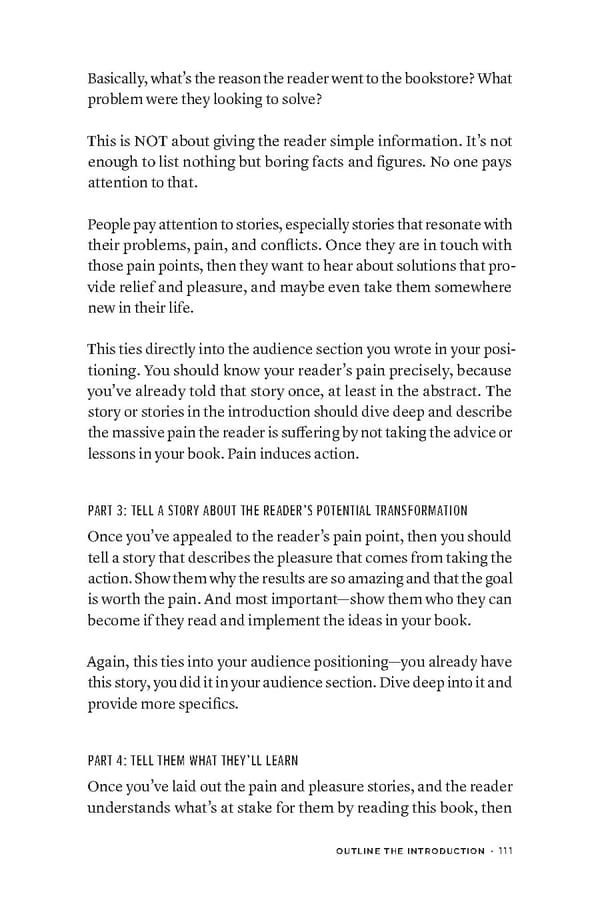Basically, what’s the reason the reader went to the bookstore? What problem were they looking to solve? This is NOT about giving the reader simple information. It’s not enough to list nothing but boring facts and figures. No one pays attention to that. People pay attention to stories, especially stories that resonate with their problems, pain, and conflicts. Once they are in touch with those pain points, then they want to hear about solutions that pro- vide relief and pleasure, and maybe even take them somewhere new in their life. This ties directly into the audience section you wrote in your posi- tioning. You should know your reader’s pain precisely, because you’ve already told that story once, at least in the abstract. The story or stories in the introduction should dive deep and describe the massive pain the reader is suffering by not taking the advice or lessons in your book. Pain induces action. PART 3: TELL A STORY ABOUT THE READER’S POTENTIAL TRANSFORMATION Once you’ve appealed to the reader’s pain point, then you should tell a story that describes the pleasure that comes from taking the action. Show them why the results are so amazing and that the goal is worth the pain. And most important—show them who they can become if they read and implement the ideas in your book. Again, this ties into your audience positioning—you already have this story, you did it in your audience section. Dive deep into it and provide more specifics. PART 4: TELL THEM WHAT THEY’LL LEARN Once you’ve laid out the pain and pleasure stories, and the reader understands what’s at stake for them by reading this book, then OUTliNE ThE iNTrODUCTiON · 111
 The Scribe Method by Tucker Max Page 110 Page 112
The Scribe Method by Tucker Max Page 110 Page 112